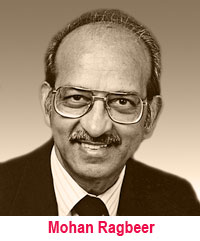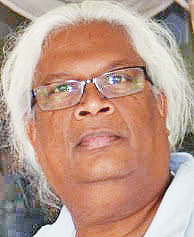Opinions
Modi’s challenges

In the last two articles I touched on the failure of the purely secular model for Indian development, with its heavy focus on politics, and get-rich-quick schemes that have corrupted both society and government, and retarded the emancipation of the poor. Governments copied western economic models and practices, and people aped western behaviours, leaving hundreds of millions without a champion.
The results for the April-May Indian elections are now in, and have potentially changed this. Some 67% of the nearly 900 million eligible people voted to elect the 542 members of the Lok Sabha,
The results for the April-May Indian elections are now in, and have potentially changed this. Some 67% of the nearly 900 million eligible people voted to elect the 542 members of the Lok Sabha,
from a total of 8,049 contestants representing 6 national, 36 state, and 657 regional parties! It was the highest turnout and highest participation by women. The NDA Alliance headed by Narendra Modi won 352 seats (BJP 303, up 21; Shiv Sena 18; JD(U) 16, up 14; others 15). The UPA Alliance won 91, (INC 52, up 8; DMK 23, up 23; others 16). Non-aligned Parties won 99, (YSRC 22, up 9; AITC, 22, down 12; BJD 12, down 8; MGB [Mahagathbandhan: BSP, SP] Alliance 10, new; TRS, 9, down 2, others 24. (For full names of parties and other data, see https://www.ndtv.com/elections.)
The BJP used the old slogan, now expanded by the last three Hindi words,“Sabka Saath, Sabka Vikas aur Sabka Vishwas”; this loosely means, “Together we grow; together we prosper; together we will build a strong and inclusive India.”
Modi communed widely with people, and though his first five years did not succeed as well as he wished, he reached the mases and asserted that they were the victors. Hopefully the next period will fashion domestic and foreign policy to improve the lot of the poorest 20%, over 200 million people, and grow the economy by over the current 6.6%, so as to provide jobs for them and new graduates.
He understands the problems; and the urgent need to find solutions in the face of internal conflicts, regional hotspots and foreign manipulation, which has never diminished since colonial days. He has extended a hand to minorities, an integral part of India today.
The challenge is to get united action to make all into a coherent functioning whole, not that there must be consensus, but there should be understanding of policies and actions, and the will to cooperate.
Grass roots programs like “Beti bachao, beti padhao” (save our girls; educate them) aimed at preventing female infanticides, and improving female education, the Pradhan Mantri Suraksha Bima Yojana (accidental death and disability insurance scheme), were welcomed. The latest, headed “NARA (National Ambition + Regional Aspirations)”, is self-explanatory, as is the call to save water as the country faces another drought after five years of it, the first long drought since independence.
Being in a majority might make some MPs feel super-important, but we hope that sound thinking to do right for all Indians replaces electioneering posturing and rhetoric, and follows Modi’s outlines for empowerment of the people.
Modi must insist that his MPs behave with maturity, tolerance and dignity, rising above and coping with differences in the multi-dimensional society that is India.
A majority Dharmic party merely reflects the population; but in India religious minorities total scores of millions each, and have been abused by politicians as vote banks! Modi said, “Minorities have been deceived in the country through an imaginary fear created for the purpose of vote-bank politics.
Humein is chhal ka vichchhed karna hai. Humein vishwas jeetna hai (we have to pierce through this deception. We have to gain trust.) It’s time to invest more in them, to empower them to channel their energies to develop India, rather than fund the middle class whose aim is America.
Modi cautioned Government MPs to listen to the opposition; but he and the Speaker must go beyond this and stop churlish and unmannerly behaviour, as seen at the swearing-in; they must be scrupulous in upholding respect for all religions, keep religion out of Parliament, and insist on tolerance – which is the history of Sanatan Dharma, that made India a sanctuary in the past.
The BJP/NDA victory is a clear chance to take a long-term view, to mend fences, and show the nation how different opinions can co-exist, to add depth to discussions of national issues. Despite the best efforts, dissension will exist as long as we have politicians.
I wish PM Modi well, but Beware the Western Devils; their address has changed from Westminster to White House, but their covetous character hasn’t!
The BJP used the old slogan, now expanded by the last three Hindi words,“Sabka Saath, Sabka Vikas aur Sabka Vishwas”; this loosely means, “Together we grow; together we prosper; together we will build a strong and inclusive India.”
Modi communed widely with people, and though his first five years did not succeed as well as he wished, he reached the mases and asserted that they were the victors. Hopefully the next period will fashion domestic and foreign policy to improve the lot of the poorest 20%, over 200 million people, and grow the economy by over the current 6.6%, so as to provide jobs for them and new graduates.
He understands the problems; and the urgent need to find solutions in the face of internal conflicts, regional hotspots and foreign manipulation, which has never diminished since colonial days. He has extended a hand to minorities, an integral part of India today.
The challenge is to get united action to make all into a coherent functioning whole, not that there must be consensus, but there should be understanding of policies and actions, and the will to cooperate.
Grass roots programs like “Beti bachao, beti padhao” (save our girls; educate them) aimed at preventing female infanticides, and improving female education, the Pradhan Mantri Suraksha Bima Yojana (accidental death and disability insurance scheme), were welcomed. The latest, headed “NARA (National Ambition + Regional Aspirations)”, is self-explanatory, as is the call to save water as the country faces another drought after five years of it, the first long drought since independence.
Being in a majority might make some MPs feel super-important, but we hope that sound thinking to do right for all Indians replaces electioneering posturing and rhetoric, and follows Modi’s outlines for empowerment of the people.
Modi must insist that his MPs behave with maturity, tolerance and dignity, rising above and coping with differences in the multi-dimensional society that is India.
A majority Dharmic party merely reflects the population; but in India religious minorities total scores of millions each, and have been abused by politicians as vote banks! Modi said, “Minorities have been deceived in the country through an imaginary fear created for the purpose of vote-bank politics.
Humein is chhal ka vichchhed karna hai. Humein vishwas jeetna hai (we have to pierce through this deception. We have to gain trust.) It’s time to invest more in them, to empower them to channel their energies to develop India, rather than fund the middle class whose aim is America.
Modi cautioned Government MPs to listen to the opposition; but he and the Speaker must go beyond this and stop churlish and unmannerly behaviour, as seen at the swearing-in; they must be scrupulous in upholding respect for all religions, keep religion out of Parliament, and insist on tolerance – which is the history of Sanatan Dharma, that made India a sanctuary in the past.
The BJP/NDA victory is a clear chance to take a long-term view, to mend fences, and show the nation how different opinions can co-exist, to add depth to discussions of national issues. Despite the best efforts, dissension will exist as long as we have politicians.
I wish PM Modi well, but Beware the Western Devils; their address has changed from Westminster to White House, but their covetous character hasn’t!
Enjoying ‘bread’ from a
super-fruit coconut
 Romeo Kaseram
Romeo Kaseram
Ma collected dried coconuts from near and far during her daily peregrinations in the fields, or whenever we foraged for firewood, or during repeated trips for buckets of spring water from the community well at the foot of a mountain rising out of the central range. Collected coconuts, its shells warped, brown, and sun-dried, were tossed among the stored firewood as flotsam under the “machan” in Ma’s perpetually smoky kitchen. The darkened storage under the “machan” was dusty and cobwebby, and to withdraw firewood in haste and in the heat of cooking to feed an irritable fireside was to set a resident population of spiders into a frenzy. Soon they were
spiraling and swirling away, urgently swinging on gossamer webs made visible as threads of light in woodsmoke and sunshine. It was here, under Ma’s “machan”, where the firewood was kept as fuel for her two firesides, or “choolhas”. The “machan” itself was a rough stand, its top filled with packed dirt that was “lepayed”, smoothened and polished with a mixture of wet, white dirt and cow dung.
In her text, Dictionary of the English/Creole of Trinidad & Tobago: On Historical Principles, Lisa Winer’s description of a “machan” ably reconstitutes its varieties of usages, structures, and construction materials. One of the models from the now unreachable past details its construction to be out of mangrove wood, which I suspect was the sturdy superstructure used to build Ma’s “machan”.
I recall its roughened framework of thick branches supported on thicker lengths, the four thickest being trunks buried into the kitchen floor as legs for this rooted table. Its “table-top” I have already described, which was packed with white earth and “lepayed” at least once a week with quick strokes from Ma’s brisk, determined hands. It was in the dark underbelly of this beast of a “machan” where the collected coconuts were stored, until the time arrived for its retrieval, and then the ceremony of Ma making coconut oil.
Of course, storage across a span of weeks, or at least a month or more, was an ongoing, random tossing of found, dried coconuts among bundles of firewood. Usage of firewood for everyday cooking, and continued replenishment, meant the dried coconuts floated further into the back of the “machan’s” underworld repository.
One of my more noisome tasks, given the bendability of my tiny, boyhood frame, was to crawl inside this underbelly to retrieve the now dusty coconuts, at times fishing with a piece of firewood, usually pre-selected for a crook at the end of the branch. I would emerge sticky with cobwebs and hacking from dust, and with an annoyed spider or two crawling in my hair, or worse, down my shirt.
Afterwards, I would constantly be challenged by the phantoms resident in this dark and musty storage area: that sticky, itchy feeling from cobwebs, which despite being efficiently scraped off the back of the neck, or the arms, continued to resonate as if still physically glued and unwholesomely clinging to the skin. Also, and worse of all, were the prickly sensations from running sweat that simulated the crawling legs of spiders spiking down my back, on a leg, or those unmentionable, hard-to-scratch, but sensitive anatomical pathways.
These crawly sensations drove me to distraction, and into episodes of furious paranoia of search and destroy. It was as if a dog, suddenly halting in its tracks, was ferociously pursuing with bared teeth shifting locations about its body in a search for unrelenting, biting fleas.
While these were the drawbacks to fetching Ma’s dried coconuts preparatory to her quest for its beneficial oil, there was an advantage that made the pain and discomfort worthwhile. In her time, Ma grew into a proficient dried coconut “busser”, which in its enunciation by an admiring uncle was a variation of the transitive verb “to bust”.
Ma’s wielding of the cutlass, previously honed on a well-worn whetstone so its edge was a line of silver similar to a singular thread of spider’s web, was so efficient she could crack open a dried coconut in a single bound. Buttressed against a stone, the falling cutlass would first crack open the coconut, so its ferment of water quickly drained away. Another descent of the blade, and the shell parted open to expose its interwoven, brown fibres, and the nourishing, white flesh.
Sometimes a treat would be discovered inside a split-open, dried coconut, which Ma scooped out and gave to me, while my uncles and a coterie of hens gazed on with murderous envy. It was a sprout, which Ma called “The bread”, from a germinating coconut.
Resident for too long in the darkness of the “machan’s” underside, a coconut or two would begin to germinate in desperation, seemingly achieving sentience and the foreknowledge of its inexorable fate: its white core grated, the milk squeezed out and rendered down into healthy, delicious coconut oil, the gathered husks fueling the “choolha” in a rapid and surging burn.
Such a treat from a germinated dried coconut meant I never saw it inimical to health: for Ma and myself, it was always a super-fruit.
In her text, Dictionary of the English/Creole of Trinidad & Tobago: On Historical Principles, Lisa Winer’s description of a “machan” ably reconstitutes its varieties of usages, structures, and construction materials. One of the models from the now unreachable past details its construction to be out of mangrove wood, which I suspect was the sturdy superstructure used to build Ma’s “machan”.
I recall its roughened framework of thick branches supported on thicker lengths, the four thickest being trunks buried into the kitchen floor as legs for this rooted table. Its “table-top” I have already described, which was packed with white earth and “lepayed” at least once a week with quick strokes from Ma’s brisk, determined hands. It was in the dark underbelly of this beast of a “machan” where the collected coconuts were stored, until the time arrived for its retrieval, and then the ceremony of Ma making coconut oil.
Of course, storage across a span of weeks, or at least a month or more, was an ongoing, random tossing of found, dried coconuts among bundles of firewood. Usage of firewood for everyday cooking, and continued replenishment, meant the dried coconuts floated further into the back of the “machan’s” underworld repository.
One of my more noisome tasks, given the bendability of my tiny, boyhood frame, was to crawl inside this underbelly to retrieve the now dusty coconuts, at times fishing with a piece of firewood, usually pre-selected for a crook at the end of the branch. I would emerge sticky with cobwebs and hacking from dust, and with an annoyed spider or two crawling in my hair, or worse, down my shirt.
Afterwards, I would constantly be challenged by the phantoms resident in this dark and musty storage area: that sticky, itchy feeling from cobwebs, which despite being efficiently scraped off the back of the neck, or the arms, continued to resonate as if still physically glued and unwholesomely clinging to the skin. Also, and worse of all, were the prickly sensations from running sweat that simulated the crawling legs of spiders spiking down my back, on a leg, or those unmentionable, hard-to-scratch, but sensitive anatomical pathways.
These crawly sensations drove me to distraction, and into episodes of furious paranoia of search and destroy. It was as if a dog, suddenly halting in its tracks, was ferociously pursuing with bared teeth shifting locations about its body in a search for unrelenting, biting fleas.
While these were the drawbacks to fetching Ma’s dried coconuts preparatory to her quest for its beneficial oil, there was an advantage that made the pain and discomfort worthwhile. In her time, Ma grew into a proficient dried coconut “busser”, which in its enunciation by an admiring uncle was a variation of the transitive verb “to bust”.
Ma’s wielding of the cutlass, previously honed on a well-worn whetstone so its edge was a line of silver similar to a singular thread of spider’s web, was so efficient she could crack open a dried coconut in a single bound. Buttressed against a stone, the falling cutlass would first crack open the coconut, so its ferment of water quickly drained away. Another descent of the blade, and the shell parted open to expose its interwoven, brown fibres, and the nourishing, white flesh.
Sometimes a treat would be discovered inside a split-open, dried coconut, which Ma scooped out and gave to me, while my uncles and a coterie of hens gazed on with murderous envy. It was a sprout, which Ma called “The bread”, from a germinating coconut.
Resident for too long in the darkness of the “machan’s” underside, a coconut or two would begin to germinate in desperation, seemingly achieving sentience and the foreknowledge of its inexorable fate: its white core grated, the milk squeezed out and rendered down into healthy, delicious coconut oil, the gathered husks fueling the “choolha” in a rapid and surging burn.
Such a treat from a germinated dried coconut meant I never saw it inimical to health: for Ma and myself, it was always a super-fruit.
